1. Jameel RS, Jasim AH. Assessment of smart phone usage among colleges students at Al-Anbar University. Ann Rom Soc Cell Biol. 2021; 25(6):14059–14068.
2. Tran J, Tran R, White JR Jr. Smartphone-based glucose monitors and applications in the management of diabetes: an overview of 10 salient “apps” and a novel smartphone-connected blood glucose monitor. Clin Diabetes. 2012; 30(4):173–178.
3. Helding L. Digital natives and digital immigrants: teaching and learning in the digital age. J Sing. 2011; 68(2):199–206.
4. Lepp A, Barkley JE, Sanders GJ, Rebold M, Gates P. The relationship between cell phone use, physical and sedentary activity, and cardiorespiratory fitness in a sample of U.S. college students. Int J Behav Nutr Phys Act. 2013; 10(1):79. PMID:
23800133.
5. Abi-Jaoude E, Naylor KT, Pignatiello A. Smartphones, social media use and youth mental health. CMAJ. 2020; 192(6):E136–E141. PMID:
32041697.
6. Chotpitayasunondh V, Douglas KM. How “phubbing” becomes the norm: the antecedents and consequences of snubbing via smartphone. Comput Human Behav. 2016; 63:9–18.
7. Kocyigit S, Guzel HS, Acikel B, Cetinkaya M. Comparison of smartphone addiction level, temperament and character and parental attitudes of adolescents with and without attention deficit hyperactivity disorder. Int J Ment Health Addict. 2021; 19(4):1372–1384.
8. Ellis DA, Davidson BI, Shaw H, Geyer K. Do smartphone usage scales predict behavior? Int J Hum Comput Stud. 2019; 130:86–92.
9. Giunchiglia F, Zeni M, Gobbi E, Bignotti E, Bison I. Mobile social media usage and academic performance. Comput Human Behav. 2018; 82:177–185.
10. Troll ES, Friese M, Loschelder DD. How students’ self-control and smartphone-use explain their academic performance. Comput Human Behav. 2021; 117:106624.
11. Ahmed RR, Salman F, Malik SA, Štreimikienė D, Soomro RH, Pahi MH. Smartphone use and academic performance of university students: a mediation and moderation analysis. Sustainability. 2020; 12(1):439.
12. King RC, Dong S. The impact of smartphone on young adults. Bus Manag Rev. 2017; 8(4):342–349.
13. Lee JW, Nam JJ, Kang KD, Han DH. The effect of smartphone app-use patterns on the performance of professional golfers. Front Psychol. 2021; 12:678691. PMID:
34108922.
14. Fortes LS, Lima-Junior D, Nascimento-Júnior JR, Costa EC, Matta MO, Ferreira ME. Effect of exposure time to smartphone apps on passing decision-making in male soccer athletes. Psychol Sport Exerc. 2019; 44:35–41.
15. Hayes M. Social Media Usage Among Elite Athletes: An Exploration of Athlete Usage During Major Events [Doctoral Dissertation]. Brisbane: Griffith University;2019.
16. Smith LR, Sanderson J. I’m going to Instagram it! An analysis of athlete self-presentation on Instagram. J Broadcast Electron Media. 2015; 59(2):342–358.
17. Lee H, Ahn H, Nguyen TG, Choi SW, Kim DJ. Comparing the self-report and measured smartphone usage of college students: a pilot study. Psychiatry Investig. 2017; 14(2):198–204.
18. Lee PH, Tse AC, Wu CS, Mak YW, Lee U. Validation of self-reported smartphone usage against objectively-measured smartphone usage in Hong Kong Chinese adolescents and young adults. Psychiatry Investig. 2021; 18(2):95–100.
19. Lin YH, Wong BY, Lin SH, Chiu YC, Pan YC, Lee YH. Development of a mobile application (app) to delineate “digital chronotype” and the effects of delayed chronotype by bedtime smartphone use. J Psychiatr Res. 2019; 110:9–15. PMID:
30611008.
20. Zimmermann L. “Your screen-time app is keeping track”: consumers are happy to monitor but unlikely to reduce smartphone usage. J Assoc Consum Res. 2021; 6(3):377–382.
21. Hodes LN, Thomas KG. Smartphone screen time: inaccuracy of self-reports and influence of psychological and contextual factors. Comput Human Behav. 2021; 115:106616.
22. Ohme J, Araujo T, de Vreese CH, Piotrowski JT. Mobile data donations: Assessing self-report accuracy and sample biases with the iOS Screen Time function. Mob Media Commun. 2021; 9(2):293–313.
23. Bouwman H, de Reuver M, Heerschap N, Verkasalo H. Opportunities and problems with automated data collection via smartphones. Mob Media Commun. 2013; 1(1):63–68.
24. Wang W, Harari GM, Wang R, Müller SR, Mirjafari S, Masaba K, et al. Sensing behavioral change over time: using within-person variability features from mobile sensing to predict personality traits. Proc ACM Interact Mob Wearable Ubiquitous Technol. 2018; 2(3):1–21.
25. Rosenthal SR, Zhou J, Booth ST. Association between mobile phone screen time and depressive symptoms among college students: a threshold effect. Hum Behav Emerg Technol. 2021; 3(3):432–440.
26. Lauricella AR, Wartella E, Rideout VJ. Young children’s screen time: the complex role of parent and child factors. J Appl Dev Psychol. 2015; 36:11–17.
27. Lane W, Manner C. The impact of personality traits on smartphone ownership and use. Int J Bus Soc Sci. 2011; 2(17):22–28.
28. Marciano L, Schulz PJ, Camerini AL. How smartphone use becomes problematic: application of the ALT-SR model to study the predicting role of personality traits. Comput Human Behav. 2021; 119:106731.
29. Peterka-Bonetta J, Sindermann C, Elhai JD, Montag C. Personality associations with smartphone and internet use disorder: a comparison study including links to impulsivity and social anxiety. Front Public Health. 2019; 7:127. PMID:
31245341.
30. Rüegger D, Stieger M, Nißen M, Allemand M, Fleisch E, Kowatsch T. How are personality states associated with smartphone data? Eur J Pers. 2020; 34(5):687–713.
31. Stachl C, Hilbert S, Au JQ, Buschek D, De Luca A, Bischl B, et al. Personality traits predict smartphone usage. Eur J Pers. 2017; 31(6):701–722.
32. Beierle F, Probst T, Allemand M, Zimmermann J, Pryss R, Neff P, et al. Frequency and duration of daily smartphone usage in relation to personality traits. Digit Psychol. 2020; 1(1):20–28.
33. Stachl C, Au Q, Schoedel R, Gosling SD, Harari GM, Buschek D, et al. Predicting personality from patterns of behavior collected with smartphones. Proc Natl Acad Sci U S A. 2020; 117(30):17680–17687. PMID:
32665436.
34. de Montjoye YA, Quoidbach J, Robic F, Pentland A. Predicting personality using novel mobile phone-based metrics. In : Greenberg AM, Kennedy WG, Bos ND, editors. Proceedings of the 6th International Conference on Social Computing, Behavioral-Cultural Modeling and Prediction; 2013 April 2–5; Washington, DC, USA. Cham, Switzerland: Springer Nature;2013. p. 48–55.
35. Xu R, Frey RM, Fleisch E, Ilic A. Understanding the impact of personality traits on mobile app adoption–Insights from a large-scale field study. Comput Human Behav. 2016; 62:244–256.
36. Harari GM, Müller SR, Stachl C, Wang R, Wang W, Bühner M, et al. Sensing sociability: Individual differences in young adults’ conversation, calling, texting, and app use behaviors in daily life. J Pers Soc Psychol. 2020; 119(1):204–228. PMID:
31107054.
37. Schoedel R, Pargent F, Au Q, Völkel ST, Schuwerk T, Bühner M, et al. To challenge the morning lark and the night owl: using smartphone sensing data to investigate day–night behaviour patterns. Eur J Pers. 2020; 34(5):733–752.
38. Hanafi E, Siste K, Wiguna T, Kusumadewi I, Nasrun MW. Temperament profile and its association with the vulnerability to smartphone addiction of medical students in Indonesia. PLoS One. 2019; 14(7):e0212244. PMID:
31295256.
39. Zeidan J, Hallit S, Akel M, Louragli I, Obeid S. Problematic smartphone use and affective temperaments among Lebanese young adults: scale validation and mediating role of self-esteem. BMC Psychol. 2021; 9(1):136. PMID:
34496954.
40. Lee HW, Choi JS, Shin YC, Lee JY, Jung HY, Kwon JS. Impulsivity in internet addiction: a comparison with pathological gambling. Cyberpsychol Behav Soc Netw. 2012; 15(7):373–377. PMID:
22663306.
41. Reynolds B, Ortengren A, Richards JB, De Wit H. Dimensions of impulsive behavior: personality and behavioral measures. Pers Individ Dif. 2006; 40(2):305–315.
42. Walther B, Morgenstern M, Hanewinkel R. Co-occurrence of addictive behaviours: personality factors related to substance use, gambling and computer gaming. Eur Addict Res. 2012; 18(4):167–174. PMID:
22398819.
43. Olivencia-Carrión MA, Ferri-García R, Rueda MD, Jiménez-Torres MG, López-Torrecillas F. Temperament and characteristics related to nomophobia. Psychiatry Res. 2018; 266:5–10. PMID:
29787807.
44. Aka BT, Kalecik S, Doğruyol B. Psychological factors related to problematic internet and smartphone use. Nesne Dergisi. 2020; 8(16):1–15.
45. Vedel A. The Big Five and tertiary academic performance: a systematic review and meta-analysis. Pers Individ Dif. 2014; 71:66–76.
46. Bhagat V, Nayak RD. Neuroticism and academic performance of medical students. Int J Humanit Soc Sci Invent. 2014; 3(1):51–55.
47. Ciorbea I, Pasarica F. The study of the relationship between personality and academic performance. Procedia Soc Behav Sci. 2013; 78:400–404.
48. Rosander P, Bäckström M. Personality traits measured at baseline can predict academic performance in upper secondary school three years late. Scand J Psychol. 2014; 55(6):611–618. PMID:
25257093.
49. Embalzado HT, Varma P. Influences of temperament types on university students’ well-being, academic performance and college adjustment. Scholar. Hum Sci. 2018; 9(2):186–202.
50. Haverkamp BF, Wiersma R, Vertessen K, van Ewijk H, Oosterlaan J, Hartman E. Effects of physical activity interventions on cognitive outcomes and academic performance in adolescents and young adults: a meta-analysis. J Sports Sci. 2020; 38(23):2637–2660. PMID:
32783695.
51. Bailey R, Armour K, Kirk D, Jess M, Pickup I, Sandford R, et al. The educational benefits claimed for physical education and school sport: an academic review. Res Pap Educ. 2009; 24(1):1–27.
52. Wilson KE, Dishman RK. Personality and physical activity: a systematic review and meta-analysis. Pers Individ Dif. 2015; 72:230–242.
53. Cloninger CR, Przybeck TR, Svrakic DM, Wetzel RD. The Temperament and Character Inventory (TCI): A Guide to Its Development and Use. Seattle, WA, USA: Center for Psychobiology of Personality, Washington University;1994.
54. Shakoor F, Fakhar A, Abbas J.. Impact of smartphones usage on the learning behaviour and academic performance of students: empirical evidence from Pakistan. Int J Acad Res Bus Soc Sci. 2021; 11(2):862–881.
55. Sunday OJ, Adesope OO, Maarhuis PL. The effects of smartphone addiction on learning: a meta-analysis. Comput Hum Behav. 2021; 4:100114.
56. Xu Q, Erman J, Gerber A, Mao Z, Pang J, Venkataraman S. Identifying diverse usage behaviors of smartphone apps. In : Proceedings of the 2011 ACM SIGCOMM Conference on Internet Measurement Conference; 2011 November 2-4; Berlin, Germany. New York, NY, USA: Association for Computing Machinery;2011. p. 329–344.
57. Agustini D, Bergamini MF, Marcolino-Junior LH. Tear glucose detection combining microfluidic thread based device, amperometric biosensor and microflow injection analysis. Biosens Bioelectron. 2017; 98:161–167. PMID:
28672191.
58. Douglas KH, Uphold NM. iPad® or iPod touch®: Evaluating self-created electronic photographic activity schedules and student preferences. J Spec Educ Technol. 2014; 29(3):1–14.
59. Jesse GR. Smartphone and app usage among college students: using smartphones effectively for social and educational needs. In : Proceedings of the EDSIG Conference; 2015 November 1–4; Wilmington, NC, USA. Wilmington, NC, USA: ISCAP;2015.
60. Bae SJ, Hong SY. Association between the learning styles with personalities of medical students and their clinical performance examination achievements. Int J Internet Broadcast Commun. 2021; 13(1):219–228.
61. Cloninger CR, Svrakic DM, Przybeck TR. A psychobiological model of temperament and character. Arch Gen Psychiatry. 1993; 50(12):975–990. PMID:
8250684.
62. Choi Y, Yang J, Jin S. A study on the temperament and character of the gifted in invention on the basis of latent profile analysis. J Creat Inf Cult. 2019; 5(2):117–134.
63. Kim IH, Ko E, Kim EJ, Ban SH, Jung JJ, Lee SH, et al. Effects of temperament and character on the specialty interests of medical students. Korean J Biol Psychiatry. 2012; 19(4):199–204.
64. Lee K, Chung H. Testing construct equivalence of TCI using multi group confirmatory factor analysis. CNU J Educ Stud. 2013; 34(2):57–77.
65. Rettew DC, Stanger C, McKee L, Doyle A, Hudziak JJ. Interactions between child and parent temperament and child behavior problems. Compr Psychiatry. 2006; 47(5):412–420. PMID:
16905406.
66. Cloninger CR, Przybeck TR, Svrakic DM. The tridimensional personality questionnaire: US normative data. Psychol Rep. 1991; 69(3 Pt 1):1047–1057. PMID:
1784653.
67. Allport GW. The open system in personality theory. J Abnorm Soc Psychol. 1960; 61(3):301–310. PMID:
13682614.
68. Cattell RB, Rao DC, Schuerger JM, Vaughan DS. Unitary personality source traits analyzed for heritability. Hum Hered. 1981; 31(5):261–275. PMID:
7199512.
69. Eysenck HJ. The effects of psychotherapy: an evaluation. J Consult Psychol. 1952; 16(5):319–324. PMID:
13000035.
70. Cloninger CR, Zohar AH. Personality and the perception of health and happiness. J Affect Disord. 2011; 128(1-2):24–32. PMID:
20580435.
71. Cohen J. A power primer. Psychol Bull. 1992; 112(1):155–159. PMID:
19565683.
72. World Medical Association. WMA Declaration of Helsinki—Ethical Principles for Medical Research Involving Human Subjects (July 9, 2018). Ferney-Voltaire, France: World Medical Association;2019.
73. Moreira P, Pedras S, Pombo P. Students’ personality contributes more to academic performance than well-being and learning approach-implications for sustainable development and education. Eur J Investig Health Psychol Educ. 2020; 10(4):1132–1149.
74. Hancock MG, Greenwell TC. The selection of a sport management major: factors influencing student choice from a consumer-oriented perspective. Sport Manag Educ J. 2013; 7(1):13–24.
75. Liu CL, Yin XW. Effects of extracurricular physical exercising on the physical pride and sense of life satisfaction of sport backward college students. J Phys Educ. 2010; 17:46–49.
76. Cross JL, Fouke BW. Redefining the scholar-athlete. Front Sports Act Living. 2019; 1:10. PMID:
33344934.
77. DeLuca JR, Braunstein-Minkove J. An evaluation of sport management student preparedness: recommendations for adapting curriculum to meet industry needs. Sport Manag Educ J. 2016; 10(1):1–12.
78. Han DH, Kim JH, Lee YS, Bae SJ, Bae SJ, Kim HJ, et al. Influence of temperament and anxiety on athletic performance. J Sports Sci Med. 2006; 5(3):381–389. PMID:
24353455.
79. Kang KD, Han DH, Hannon JC, Hall MS, Choi JW. Temperamental predictive factors for success in Korean professional baseball players. Psychiatry Investig. 2015; 12(4):459–465.
80. Lee HG. The experience process of the student-athletes who perform both study and sport: redefining self. Korean J Sociol Sport. 2011; 24(1):1–24.
81. Monasterio E, Mei-Dan O, Hackney AC, Lane AR, Zwir I, Rozsa S, et al. Stress reactivity and personality in extreme sport athletes: the psychobiology of BASE jumpers. Physiol Behav. 2016; 167:289–297. PMID:
27693575.
82. van Breda K, Collins M, Stein DJ, Rauch L. The COMT val
158met polymorphism in ultra-endurance athletes. Physiol Behav. 2015; 151:279–283. PMID:
26253211.
83. Kang S. A study on differences of career barriers, employment stress and career development behavior among collegiate athletes, sport-majored college students and non-sport-majored college students. Korean J Phys Educ. 2015; 54(1):83–95.
84. Davis KD, Winsler A, Middleton M. Students’ perceptions of rewards for academic performance by parents and teachers: relations with achievement and motivation in college. J Genet Psychol. 2006; 167(2):211–220. PMID:
16910211.
85. Moreira PA, Oliveira JT, Cloninger KM, Azevedo C, Sousa A, Castro J, et al. The psychometrics and validity of the Junior Temperament and Character Inventory in Portuguese adolescents. Compr Psychiatry. 2012; 53(8):1227–1236. PMID:
22682682.
86. Bauger L, Eisemann M, Vangberg HC. Personality traits among junior elite athletes in Norway, and a comparison with their non-athletic counterparts. Athl Insight. 2013; 5(2):145.
87. Nixon SJ, Parsons OA. Cloninger’s tridimensional theory of personality: construct validity in a sample of college students. Pers Individ Dif. 1989; 10(12):1261–1267.
88. Singh K. Study of achievement motivation in relation to academic achievement of students. Int J Educ Plann Adm. 2011; 1(2):161–171.
89. Lichtenberg P, Bachner-Melman R, Ebstein RP, Crawford HJ. Hypnotic susceptibility: multidimensional relationships with Cloninger’s Tridimensional Personality Questionnaire, COMT polymorphisms, absorption, and attentional characteristics. Int J Clin Exp Hypn. 2004; 52(1):47–72. PMID:
14768969.
90. Brecht AA, Burnett DD. Advising student-athletes for success: predicting the academic success and persistence of collegiate student-athletes. NACADA J. 2019; 39(1):49–59.
91. Nasvytienė D, Lazdauskas T.. Temperament and academic achievement in children: a meta-analysis. Eur J Investig Health Psychol Educ. 2021; 11(3):736–757.
92. Ali M, Yaacob RA, Endut MN, Langove NU. Strengthening the academic usage of social media: an exploratory study. J King Saud Univ Comput Inf Sci. 2017; 29(4):553–561.
93. Karpinski AC, Kirschner PA, Ozer I, Mellott JA, Ochwo P. An exploration of social networking site use, multitasking, and academic performance among United States and European university students. Comput Human Behav. 2013; 29(3):1182–1192.
94. González-Cutre D, Sicilia Á. The importance of novelty satisfaction for multiple positive outcomes in physical education. Eur Phys Educ Rev. 2019; 25(3):859–875.
95. Wang JJ, Wann DL, Lu Z, Zhang JJ. Self-expression through sport participation: exploring participant desired self-image. Eur Sport Manag Q. 2018; 18(5):583–606.
96. Moghavvemi S, Sulaiman A, Aziz AA, Wai PS. The impact of Facebook usage on academic performance. In : Proceedings of the International Conference on Research and Innovation in Information Systems (ICRIIS); 2017 July 16–17; Langkawi, Malaysia. Manhattan, NY, USA: IEEE;2017.
97. Shahibi MS, Rusli K. The influence of internet usage on student’s academic performance. Int J Acad Res Bus Soc Sci. 2017; 7(8):873–887.
98. Soegoto E, Tjokroadiponto S. Effect of internet on student's academic performance and social life. IOP Conf Ser Mater Sci Eng. 2018; 407:012176.
99. Driller M, Tavares F, McMaster D, O’Donnell S. Assessing a smartphone application to measure counter-movement jumps in recreational athletes. Int J Sports Sci Coaching. 2017; 12(5):661–664.
100. Roos F, Surujlal J. Video analysis in golf coaching: an insider perspective. Mediterr J Soc Sci. 2014; 5(21):399.
101. Sheehan RB, Herring MP, Campbell MJ. Longitudinal relations of mental health and motivation among elite student-athletes across a condensed season: plausible influence of academic and athletic schedule. Psychol Sport Exerc. 2018; 37:146–152.
102. Voight M, Page P, Chidester M, Hardiek L, Macko S, Sexton Z, et al. The impact of hip abduction elastic-resisted neuromuscular feedback on frontal plane knee kinematics in female volleyball athletes. J Perform Health Res. 2017; 1(2):23–30.
103. Johannes N, Veling H, Verwijmeren T, Buijzen M. Hard to resist? J Media Psychol. 2019; 31(4):214–225.
104. Thornton B, Faires A, Robbins M, Rollins E. The mere presence of a cell phone may be distracting. Soc Psychol (Gott). 2014; 45(6):479–488.
105. Duckworth AL, Taxer JL, Eskreis-Winkler L, Galla BM, Gross JJ. Self-control and academic achievement. Annu Rev Psychol. 2019; 70(1):373–399. PMID:
30609915.
106. Han S, Yi YJ. How does the smartphone usage of college students affect academic performance? J Comput Assist Learn. 2019; 35(1):13–22.
107. Lane HY, Chang CJ, Huang CL, Chang YH. An investigation into smartphone addiction with personality and sleep quality among university students. Int J Environ Res Public Health. 2021; 18(14):7588. PMID:
34300037.
108. Michaels JW. Classroom reward structures and academic performance. Rev Educ Res. 1977; 47(1):87–98.
109. Çakıroğlu Ü, Başıbüyük B, Güler M, Atabay M, Memiş BY. Gamifying an ICT course: influences on engagement and academic performance. Comput Human Behav. 2017; 69:98–107.
110. Camilleri AC, Camilleri MA. Mobile learning via educational apps: an interpretative study. In : Proceedings of the 2019 5th International Conference on Education and Training Technologies; 2019 May 27–29; Seoul, Korea. New York, NY, USA: Association for Computing Machinery;2019.
111. Fuster-Guilló A, Pertegal-Felices ML, Jimeno-Morenilla A, Azorín-López J, Rico-Soliveres ML, Restrepo-Calle F. Evaluating impact on motivation and academic performance of a game-based learning experience using kahoot. Front Psychol. 2019; 10:2843. PMID:
31920872.
112. Garneli V, Giannakos M, Chorianopoulos K. Serious games as a malleable learning medium: the effects of narrative, gameplay, and making on students’ performance and attitudes. Br J Educ Technol. 2017; 48(3):842–859.
113. Sawant S, Lodhe N. Digital wellbeing. VIVA Tech Int J Res Innov. 2021; 1(4):1–4.
114. Haugan G, Moksnes UK, Løhre A. Intrapersonal self-transcendence, meaning-in-life and nurse-patient interaction: powerful assets for quality of life in cognitively intact nursing-home patients. Scand J Caring Sci. 2016; 30(4):790–801. PMID:
26917325.
115. Wright KB. Quality of Life, Self-Transcendence, Illness Distress, and Fatigue in Liver Transplant Recipients. Austin, TX, USA: The University of Texas at Austin;2003.
116. Halson SL. Sleep monitoring in athletes: motivation, methods, miscalculations and why it matters. Sports Med. 2019; 49(10):1487–1497. PMID:
31093921.
117. Kettunen E, Kari T, Makkonen M, Critchley W. Digital coaching and athlete’s self-efficacy: a quantitative study on sport and wellness technology. In : Proceedings of the Mediterranean Conference on Information Systems; 2018 September 28–30; Corfu, Greece. place unknown: AISeL;2018.
118. Reed PG. Self-transcendence and mental health in oldest-old adults. Nurs Res. 1991; 40(1):5–11. PMID:
1987557.
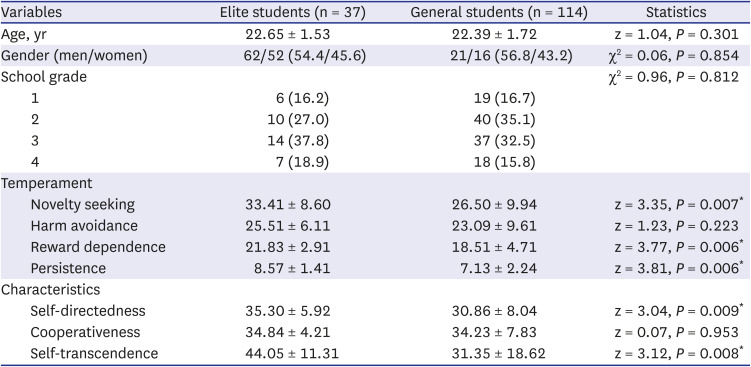

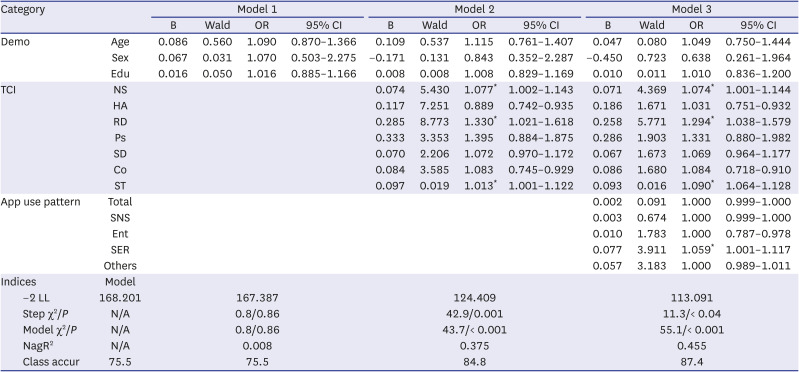

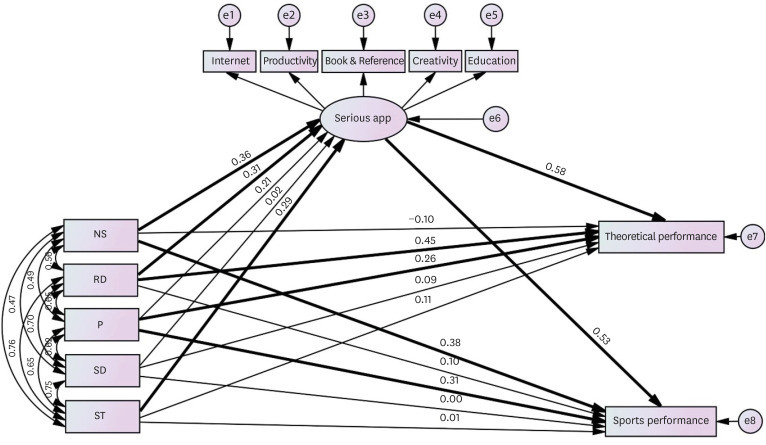
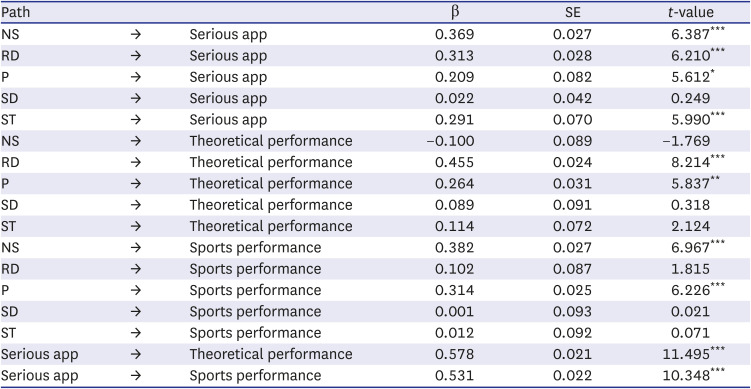




 PDF
PDF Citation
Citation Print
Print



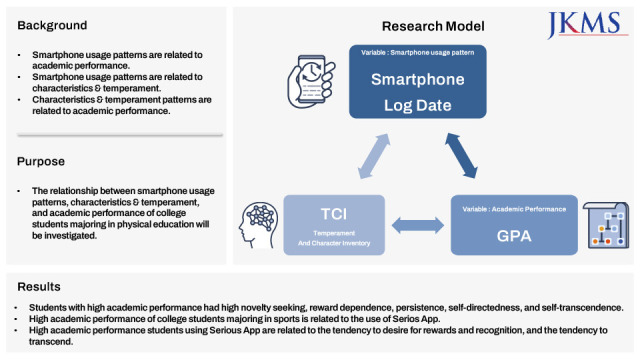
 XML Download
XML Download